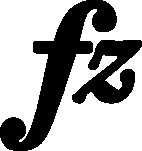



The four  marks reflect the interpretative problems posed by the A notation in this respect. When interpreted literally, they constitute a sequence of diminuendoes in a fragment additionally provided with crescendo and leading to a clear climax in bar 86. Therefore, the logic of the musical course reveals that such a standard understanding of these marks is inaccurate or incomplete. The way they were reproduced by GE (→FE,EE,IE) – the first one right after
marks reflect the interpretative problems posed by the A notation in this respect. When interpreted literally, they constitute a sequence of diminuendoes in a fragment additionally provided with crescendo and leading to a clear climax in bar 86. Therefore, the logic of the musical course reveals that such a standard understanding of these marks is inaccurate or incomplete. The way they were reproduced by GE (→FE,EE,IE) – the first one right after  , the remaining ones starting from the 1st quaver in each group – makes us think that Chopin wanted to have here long accents. This assumption is confirmed by a similar version of notation in an autograph of the Etude in A minor, Op. 10 No. 2, bar 32 and 45-46, in which marks representing accents are also placed after notes (chords) constituting the figuration framework, which are naturally predestined to be accented. According to us, the key to understanding this kind of notation are combinations such as
, the remaining ones starting from the 1st quaver in each group – makes us think that Chopin wanted to have here long accents. This assumption is confirmed by a similar version of notation in an autograph of the Etude in A minor, Op. 10 No. 2, bar 32 and 45-46, in which marks representing accents are also placed after notes (chords) constituting the figuration framework, which are naturally predestined to be accented. According to us, the key to understanding this kind of notation are combinations such as 
 , which indicate an "accent with prolonged effect". In situations in which
, which indicate an "accent with prolonged effect". In situations in which  (or
(or  , as in the Variations in B
, as in the Variations in B , Op. 2) seemed too strong, it was a shifted lonely
, Op. 2) seemed too strong, it was a shifted lonely  mark that was used to indicate such a "prolonged" accent. Such situations concern mainly the early period of Chopin's oeuvre and represent a certain stage of development of his favourite expressive mark, that is the long accent. Therefore, in the main text we suggest long accents, which, according to us, most clearly convey the meaning of the Chopinesque marks in this place.
mark that was used to indicate such a "prolonged" accent. Such situations concern mainly the early period of Chopin's oeuvre and represent a certain stage of development of his favourite expressive mark, that is the long accent. Therefore, in the main text we suggest long accents, which, according to us, most clearly convey the meaning of the Chopinesque marks in this place.
Compare the passage in the sources »
category imprint: Graphic ambiguousness; Differences between sources
issues: Long accents, GE revisions
notation: Articulation, Accents, Hairpins

